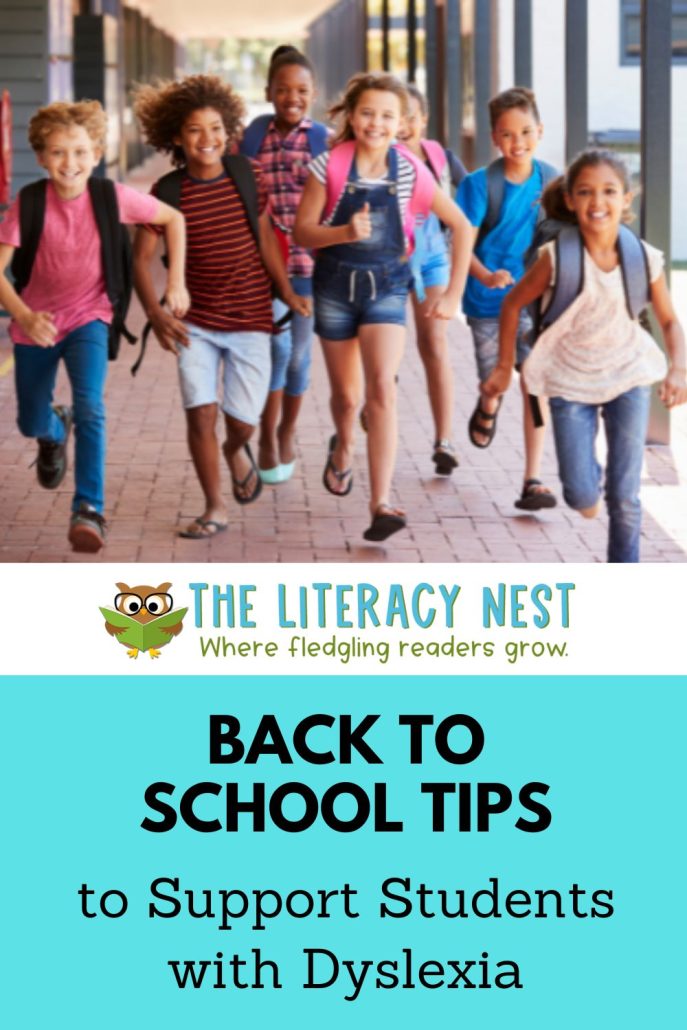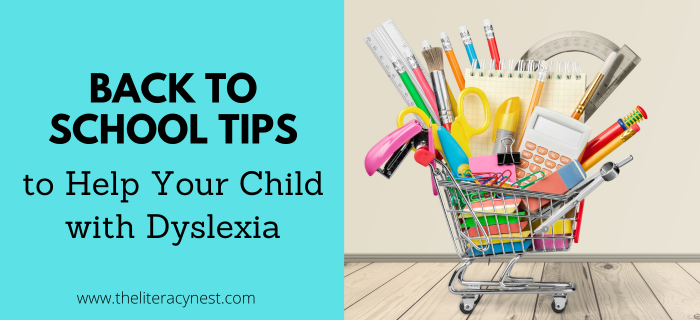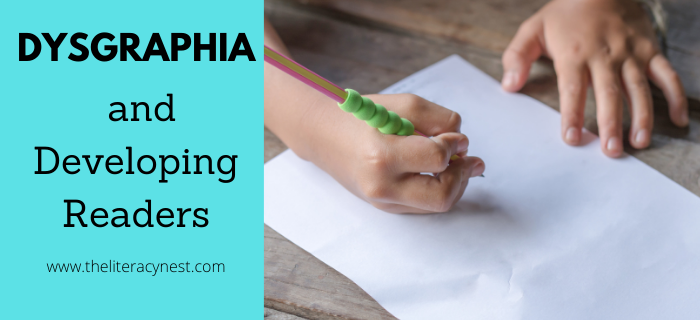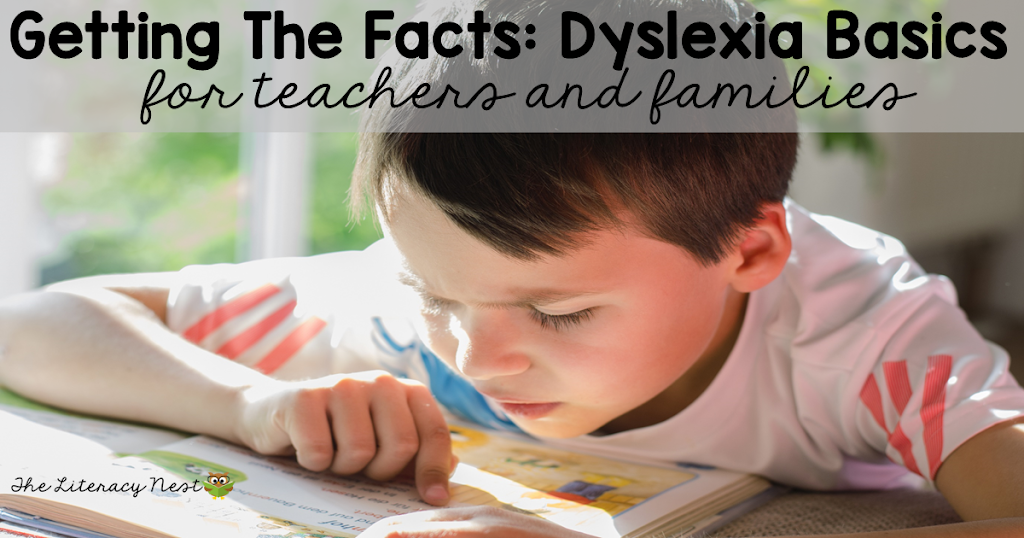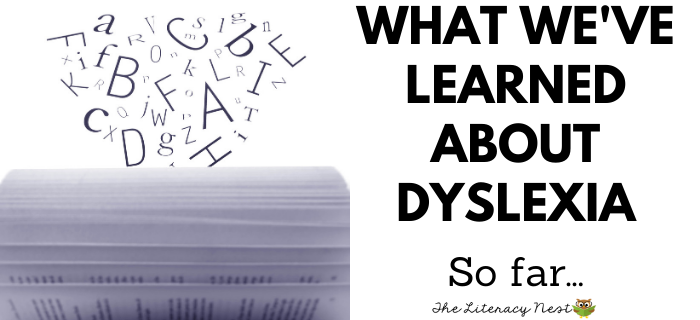Back to School Tips to Support Students with Dyslexia
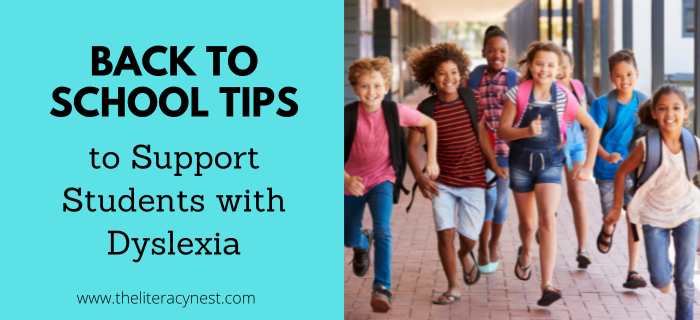
New sneakers, new lunchboxes, freshly sharpened pencils, and a fresh start are symbols of the beginning of a new school year. A new year also means new teachers and often some new challenges for your students with dyslexia. When a child has dyslexia, we have a particularly important role in their education. We become an educator, an advocate, a cheerleader, and a mentor.
Here are Some Back to School Tips for Helping Your Dyslexic Students Start the Year on the Right Foot!
1. Communication is key.
Communication is probably a parent’s most important job for back to school. Open up the lines of communication with classroom teachers, special education teachers, and coordinators. Schedule a phone conference and be sure to discuss the most important topics like expectations, goals, and concerns.
Although teachers receive copies of accommodations and IEPs, it is far more effective to have a telephone chat to bring up these important considerations. Getting everyone on the same page at the very start helps to start the school year strong.
Dive deeper into this topic! Listen to season three, episode two of the Togethr in Literacy podcast: How to Talk About Dyslexia!
2. Teach your child self-advocacy.
In an ideal situation, children gradually begin to take on more and more ownership of their learning and ultimately take an active role in participating in putting together an individualized learning plan. Students are often identified later and many students find themselves needing to self-advocate sooner rather than later.
Perhaps a substitute is unaware of important accommodations or is putting your child on the spot to read aloud. This is a particularly sensitive and tricky situation. Even barring this sort of tricky scenario, students need to be able to communicate about how they learn best, what they need to be most successful, and how to ask for help.
Learn more about teaching your students self-advocacy! Check out my tips and books list: Tips for Teaching Self-Advocacy Skills!
3. Find the self-care that works best for your child.
School can be exhausting for all kids, but particularly so for students who may have difficulty with learning to read and write. Knowing how your child best recharges and refreshes at the end of a long day is extremely helpful. Perhaps they need quiet time and a snack when first arriving home from school. Or maybe exercise is the key to your learner’s self-care routine.
Helping your child determine this and supporting them in their self-care endeavors is supporting not only their reading and writing but the whole child and their social and emotional well-being.
4. Harness the power of routine and organization.
Chances are it comes as no surprise to you that many students who struggle with reading or writing also may have characteristics of ADHD. Since students with dyslexia often need more time than their classmates to complete assignments, organizational skills are very important. Find out what works for your family and your students.
A big wall calendar in the kitchen might be the perfect organizational tool, or some other arrangement of schedules, visual checklists, and calendar apps may be just what your student needs to stay organized. There is no “one-size-fits-all” solution, so keep trying until you find something that clicks for your learner.
5. Seek additional tools.
Build an assistive toolbox with your student. A key to the success of students with dyslexia is for them to know the materials that help them be successful. Whether it is assistive technology devices, apps, planners, or fidget toys, an assistive toolbox can be as high-tech or low-tech as works for you. For high schoolers or college students, a notetaking app and Apple Pencil can help ease the transition to notetaking during lectures.

Before high-tech, you may want to help them harness the power of index cards and highlighters to make studying work effectively. Colored pens or color-coded notebooks are other popular organizational tools. Your student may need to try out more than one organizational technique to help them master their learning. These tools will likely shift as your child advances through the grades and begins to cover more complex material.
BONUS! Find an outlet for your child to explore their passion.
When the school bell begins to ring again and the buses start to roll, our children with dyslexia start spending their days doing hard things. So much of school is hard for them. In a school day, there may be very few things that hit on a child’s strengths and make them feel proud.
Whether it is art music or animals, finding a way to nurture their special interest or passion helps battle the fatigue of hard learning in a couple of important ways. Nurturing a passion is restorative of energy and positivity. Seeing success is highly encouraging and motivating. Seeing the ways that reading and writing help them with something they are passionate about is further motivating.
Back to School Decodable Readers
These Back to School are perfect to share with your dyslexic students at the beginning of the school year. They follow an Orton-Gillingham progression to support your Orton-Gillingham lesson plans. Your students will practice their decoding and fluency skills while enjoying fun back-to-school and fall-themed stories.
You can grab it at The Literacy Nest Shop.
As you juggle the many hats of parenting and teaching, I hope this list of tips helps you and your child start the year off smoothly and successfully!
Are you looking for professional development that will help you better support your students with dyslexia? The Literacy Nest has a membership for that…
Building Readers for Life Academy is a monthly membership program that empowers educators AND families. It dives into structured literacy and strategies for ALL learners. With BRFL Academy, you’ll learn what it takes to help EVERY student become a reader for life.
